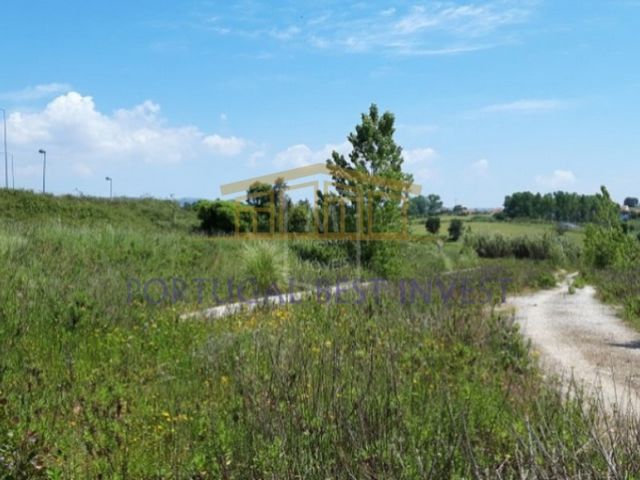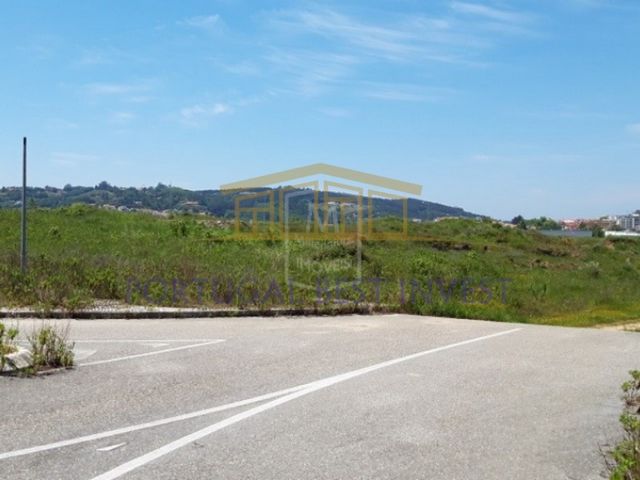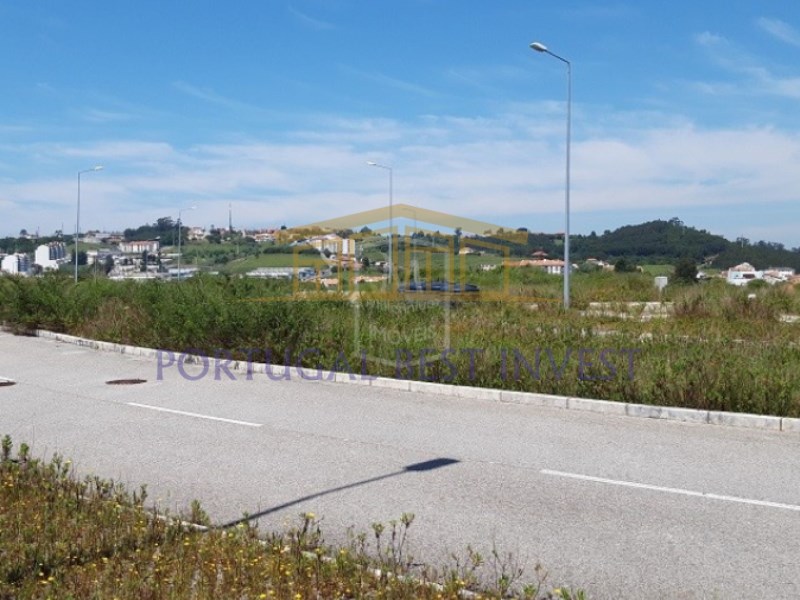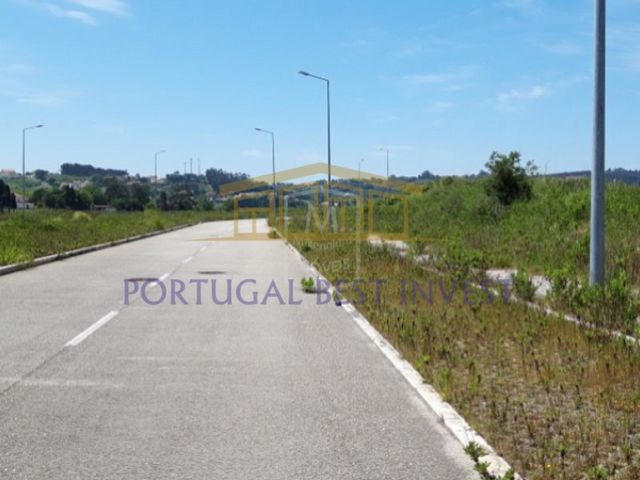КАРТИНКИ ЗАГРУЖАЮТСЯ...
Земельный участок (Продажа)
151 950 м²
Ссылка:
GHFM-T4646
/ pbi-1253
Ссылка:
GHFM-T4646
Страна:
PT
Регион:
Leiria
Город:
Alcobaça
Категория:
Жилая
Тип сделки:
Продажа
Тип недвижимости:
Земельный участок
Площадь:
151 950 м²
ЦЕНЫ ЗА М² НЕДВИЖИМОСТИ В СОСЕДНИХ ГОРОДАХ
| Город |
Сред. цена м2 дома |
Сред. цена м2 квартиры |
|---|---|---|
| Алкобаса | 178 611 RUB | 301 797 RUB |
| Назаре | - | 287 334 RUB |
| Лейрия | 196 221 RUB | 260 988 RUB |
| Носса-Сеньора-ду-Популу | - | 175 055 RUB |
| Нададору | 254 455 RUB | - |
| Риу-Майор | 164 855 RUB | - |
| Фош-ду-Арелью | 279 918 RUB | - |
| Обидуш | 291 966 RUB | 377 006 RUB |
| Лейрия | 162 400 RUB | 245 058 RUB |
| Бомбаррал | 168 087 RUB | 198 993 RUB |
| Сантарен | 130 702 RUB | - |
| Кадавал | 135 332 RUB | - |
| Лориньян | 291 253 RUB | 350 278 RUB |
| Аленкер | 204 314 RUB | 216 028 RUB |
| Торриш-Ведраш | 216 823 RUB | 263 979 RUB |
| Салватерра-ди-Магуш | 167 890 RUB | - |





Energy Rating: Exempt
#ref:PBI-1253 Показать больше Показать меньше Wichtige Zuteilung mit Alcobaça, deren Urbanisierungsarbeiten von der CMA genehmigt wurden, für Wohnen (Ein- und Mehrfamilienhäuser), Handel und Dienstleistungen mit einer Gesamtbruttobaufläche (ABC) von 151.950 m2.Energieklasse: BefreitDie heutige Stadt Alcobaça ist in den Tälern des Flusses Alcoa und des Flusses Baça gewachsen.Das Gebiet der heutigen Gemeinde Alcobaça wurde von den Römern bewohnt, aber die Konfession wurde ihm von den Arabern überlassen, deren Besetzung eine Ära des Fortschritts bezeichnet, nach den zahlreichen Toponymen der angrenzenden Länder zu urteilen, die sie erinnern, wie Alcobaça, Alfeizerão, Aljubarrota, Alpedriz und andere Toponyme.Als Alcobaça zurückerobert wurde, hatte der Ort Zugang zum nahe gelegenen Meer, das die große Pederneira-Lagune bildete, die Cós erreichte und es ihnen ermöglichte, die Schiffe zu segeln, die dank der von den Zisterziensermönchen eingeführten Technik in den Rest des Landes transportierten.Afonso Henriques versüßte den Zisterziensermönchen am 8. April 1153 die Länder von Alcobaça mit der Verpflichtung, sie aufzurülpsen; Die Schenkungen, die über die verschiedenen Regierungszeiten gemacht wurden, bildeten ein riesiges Gebiet - die Coutos von Alcobaça - von etwa São Pedro de Moel bis São Martinho do Porto und von Aljubarrota bis Alvorninha, und das Gebiet erreichte sein Maximum in der Regierungszeit von D. Fernando I.Die Mönche der Zisterzienser wurden Herren von 14 Dörfern, von denen 4 Seehäfen waren: Alfeizerão, São Martinho do Porto, Pederneira und Paredes da Vitória.Die Mönche von Alcobaça haben neben ihrer religiösen und kulturellen Tätigkeit seit 1269 öffentlichen Unterricht und lehrten in ihnen neben Geisteswissenschaften, Logik und Theologie landwirtschaftliche Techniken - entwickelten eine bemerkenswerte und dauerhafte Kolonisationsaktion, die die landwirtschaftlichen Innovationen, die in anderen Klöstern erlebt wurden, in die Praxis umsetzten und dank derer sie das Land rülpsten, Stöcke trockneten, Kulturen einführten, die für jedes Land geeignet waren, und organisierten Bauernhöfe oder Bauernhöfe, Was sie Farmen nannten, schufen praktisch aus dem Nichts eine landwirtschaftliche Region, die bis heute als eine der produktivsten in Portugal geblieben ist. Joaquim Vieira Naatividade bezeichnet die Mönche von Alcobaça als Mönch-Agronome.Die Gemeinden Alcobaça und Nazaré sowie ein Teil der nördlichen Gemeinde Caldas da Rainha wurden von den Alcobacense-Mönchen gerülpst und verwaltet. Dieses riesige Gebiet wurde Coutos de Alcobaça genannt.
Energiekategorie: Befreit
#ref:PBI-1253 Importante parcela con Alcobaça cuyas obras de urbanización fueron aprobadas por la CMA, para vivienda (unifamiliar y plurifamiliar), comercio y servicios, con una Superficie Bruta de Construcción (ABC) total de 151.950m2.Clase energética: ExentaLa actual ciudad de Alcobaça ha crecido en los valles del río Alcoa y el río Baça.El área del actual municipio de Alcobaça fue habitada por los romanos, pero la denominación le fue dejada por los árabes, cuya ocupación denota una época de progreso a juzgar por los numerosos topónimos de las tierras adyacentes que les recuerdan, como Alcobaça, Alfeizerão, Aljubarrota, Alpedriz y otros topónimos.Cuando Alcobaça fue reconquistada, la localidad tuvo acceso al mar cercano que formaba la gran Laguna de Pederneira que llegaba hasta Cós y les permitía navegar las embarcaciones que transportaban al resto del país los deliciosos frutos producidos en la región gracias a la técnica introducida por los monjes de Cisterna.Afonso Henriques endulzó las Tierras de Alcobaça a los monjes cistercienses el 8 de abril de 1153, con la obligación de eructarlas; las donaciones realizadas a lo largo de los diversos reinados llegaron a constituir un vasto territorio - Los Coutos de Alcobaça - que van desde aproximadamente São Pedro de Moel hasta São Martinho do Porto y desde Aljubarrota hasta Alvorninha, y el territorio alcanzó su máximo en el reinado de D. Fernando I.Los monjes de Cistermen llegaron a ser señores de 14 aldeas de las cuales 4 eran puertos marítimos: Alfeizerão, São Martinho do Porto, Pederneira y Paredes da Vitória.Los monjes de Alcobaça, además de su actividad religiosa y cultural, han tenido clases públicas desde 1269 y en ellas, además de Humanidades, Lógica y Teología, enseñaron técnicas agrícolas, desarrollaron una notable y duradera acción colonizadora, poniendo en práctica las innovaciones agrícolas experimentadas en otros monasterios y gracias a las cuales eructaban las tierras, secaban palos, introducían culturas adecuadas a cada tierra y organizaban granjas o granjas, lo que llamaron granjas, creando prácticamente de la nada una región agrícola que se ha mantenido hasta nuestros días como una de las más productivas de Portugal. Joaquim Vieira Naatividade se refiere a los monjes de Alcobaça, como los monjes-agrónomos.Los municipios de Alcobaça y Nazaré, así como parte del municipio norteño de Caldas da Rainha, fueron eructados y administrados por los monjes alcobacenses. Este vasto territorio fue llamado los Coutos de Alcobaça.
#ref:PBI-1253 Lotissement important avec Alcobaça dont les travaux d'urbanisation ont été approuvés par la CMA, pour le logement (unifamilial et multifamilial), le commerce et les services, avec une surface brute totale de construction (ABC) de 151 950m2.Classe énergétique : ExemptéLa ville actuelle d'Alcobaça s'est développée dans les vallées de la rivière Alcoa et de la rivière Baça.La zone de la municipalité actuelle d'Alcobaça était habitée par les Romains, mais la dénomination lui a été laissée par les Arabes, dont l'occupation dénote une ère de progrès à en juger par les nombreux toponymes des terres adjacentes qui leur rappellent, tels que Alcobaça, Alfeizerão, Aljubarrota, Alpedriz et d'autres toponymes.Lors de la reconquête d'Alcobaça, la localité a eu accès à la mer voisine qui a formé la grande lagune de Pederneira qui a atteint Cós et leur a permis de naviguer sur les navires qui transportaient vers le reste du pays les délicieux fruits produits dans la région grâce à la technique introduite par les moines de Cisterer.Afonso Henriques édulcora les terres d'Alcobaça aux moines cisterciens le 8 avril 1153, avec l'obligation de les roter; les dons faits au cours des différents règnes en vinrent à constituer un vaste territoire - les Coutos d'Alcobaça - allant d'environ São Pedro de Moel à São Martinho do Porto et d'Aljubarrota à Alvorninha, et le territoire atteignit son maximum sous le règne de D. Fernando I.Les moines de Cistermen sont devenus seigneurs de 14 villages dont 4 étaient des ports maritimes: Alfeizerão, São Martinho do Porto, Pederneira et Paredes da Vitória.Les moines d'Alcobaça, en plus de leur activité religieuse et culturelle- ont eu des cours publics depuis 1269 et en eux, en plus des sciences humaines, de la logique et de la théologie, enseigné des techniques agricoles - développé une action de colonisation remarquable et durable, mettant en pratique les innovations agricoles expérimentées dans d'autres monastères et grâce auxquels ils rotaient les terres, séchaient des bâtons, introduisaient des cultures adaptées à chaque terre et organisaient des fermes ou des fermes, ce qu'ils appelaient des fermes, créant pratiquement à partir de rien une région agricole qui est restée à ce jour comme l'une des plus productives du Portugal. Joaquim Vieira Naatividade se réfère aux moines d'Alcobaça, comme les moines-agronomes.Les municipalités d'Alcobaça et de Nazaré, ainsi qu'une partie de la municipalité septentrionale de Caldas da Rainha, ont été rotées et administrées par les moines d'Alcobacense. Ce vaste territoire s'appelait les Coutos de Alcobaça.
Performance Énergétique: Exempt
#ref:PBI-1253 Loteamento importante junto a Alcobaça cujas obras de urbanização foram aprovadas pela CMA, para habitação (unifamiliar e plurifamiliar), comércio e serviços, com Área Bruta de Construção (ABC) total de 151.950m2.Classe Energética: IsentoA atual cidade de Alcobaça cresceu nos vales do rio Alcoa e do rio Baça.A área do atual concelho de Alcobaça foi habitada pelos Romanos, mas a denominação ficou-lhe dos Árabes, cuja ocupação denota uma era de progresso a julgar pelos numerosos topónimos das terras adjacentes que os recordam, tais como Alcobaça, Alfeizerão, Aljubarrota, Alpedriz e ainda outros topónimos.Quando Alcobaça foi reconquistada, a localidade tinha acesso ao mar que perto formava a grande Lagoa da Pederneira que atingia Cós e permitia navegarem as embarcações que transportavam para o resto do País os frutos deliciosos produzidos na região graças à técnica introduzida pelos monges de Cister.Afonso Henriques doou aos monges Cistercienses a 8 de Abril de 1153 as Terras de Alcobaça, com a obrigação de as arrotearem; as doações feitas ao longo dos diversos reinados vieram a constituir um vastíssimo território - Os Coutos de Alcobaça - que ia desde cerca de São Pedro de Moel a São Martinho do Porto e de Aljubarrota a Alvorninha, tendo o território atingido o seu máximo no reinado de D. Fernando I.Os monges de Cister chegaram a ser senhores de 14 vilas das quais 4 eram portos de mar: Alfeizerão, São Martinho do Porto, Pederneira e Paredes da Vitória.Os monges de Alcobaça, além da sua atividade religiosa e cultural- tiveram aulas públicas desde 1269 e nelas, além de Humanidades, Lógica e Teologia, ensinaram técnicas agrícolas - desenvolveram uma ação colonizadora notável e perdurável, pondo em prática as inovações agrícolas experimentadas noutros mosteiros e graças às quais arrotearam as terras, secaram pauis, introduziram culturas adequadas a cada terreno e organizaram explorações ou quintas, a que chamavam granjas, criando praticamente a partir do nada uma região agrícola que se manteve até aos nossos dias como uma das mais produtivas de Portugal. Joaquim Vieira Natividade refere-se aos monges de Alcobaça, como os monges-agrónomos.Os concelhos de Alcobaça e Nazaré, bem como parte do norte do concelho de Caldas da Rainha, foi arroteada e administrada pelos monges alcobacenses. Este vasto território denominava-se os Coutos de Alcobaça.
#ref:PBI-1253 Important allotment with Alcobaça whose urbanization works were approved by the CMA, for housing (single-family and multi-family), commerce and services, with a total Gross Construction Area (ABC) of 151,950m2.Energy Class: ExemptThe current city of Alcobaça has grown in the valleys of the Alcoa River and the Baça River.The area of the current municipality of Alcobaça was inhabited by the Romans, but the denomination was left to it by the Arabs, whose occupation denotes an era of progress judging by the numerous toponyms of the adjacent lands that remind them, such as Alcobaça, Alfeizerão, Aljubarrota, Alpedriz and other toponyms.When Alcobaça was reconquered, the locality had access to the nearby sea that formed the great Pederneira Lagoon that reached Cós and allowed them to sail the vessels that transported to the rest of the country the delicious fruits produced in the region thanks to the technique introduced by the monks of Cisterer.Afonso Henriques sweetened the Lands of Alcobaça to the Cistercian monks on April 8, 1153, with the obligation to burp them; the donations made over the various reigns came to constitute a vast territory - The Coutos of Alcobaça - ranging from about São Pedro de Moel to São Martinho do Porto and from Aljubarrota to Alvorninha, and the territory reached its maximum in the reign of D. Fernando I.The monks of Cistermen came to be lords of 14 villages of which 4 were sea ports: Alfeizerão, São Martinho do Porto, Pederneira and Paredes da Vitória.The monks of Alcobaça, in addition to their religious and cultural activity- have had public classes since 1269 and in them, in addition to Humanities, Logic and Theology, taught agricultural techniques - developed a remarkable and lasting colonizing action, putting into practice the agricultural innovations experienced in other monasteries and thanks to which they burped the lands, dried sticks, introduced cultures suitable to each land and organized farms or farms, what they called farms, creating practically from nothing an agricultural region that has remained to this day as one of the most productive in Portugal. Joaquim Vieira Naatividade refers to the monks of Alcobaça, as the monks-agronomes.The municipalities of Alcobaça and Nazaré, as well as part of the northern municipality of Caldas da Rainha, was burped and administered by the Alcobacense monks. This vast territory was called the Coutos de Alcobaça.
Energy Rating: Exempt
#ref:PBI-1253 Important allotment with Alcobaça whose urbanization works were approved by the CMA, for housing (single-family and multi-family), commerce and services, with a total Gross Construction Area (ABC) of 151,950m2.Energy Class: ExemptThe current city of Alcobaça has grown in the valleys of the Alcoa River and the Baça River.The area of the current municipality of Alcobaça was inhabited by the Romans, but the denomination was left to it by the Arabs, whose occupation denotes an era of progress judging by the numerous toponyms of the adjacent lands that remind them, such as Alcobaça, Alfeizerão, Aljubarrota, Alpedriz and other toponyms.When Alcobaça was reconquered, the locality had access to the nearby sea that formed the great Pederneira Lagoon that reached Cós and allowed them to sail the vessels that transported to the rest of the country the delicious fruits produced in the region thanks to the technique introduced by the monks of Cisterer.Afonso Henriques sweetened the Lands of Alcobaça to the Cistercian monks on April 8, 1153, with the obligation to burp them; the donations made over the various reigns came to constitute a vast territory - The Coutos of Alcobaça - ranging from about São Pedro de Moel to São Martinho do Porto and from Aljubarrota to Alvorninha, and the territory reached its maximum in the reign of D. Fernando I.The monks of Cistermen came to be lords of 14 villages of which 4 were sea ports: Alfeizerão, São Martinho do Porto, Pederneira and Paredes da Vitória.The monks of Alcobaça, in addition to their religious and cultural activity- have had public classes since 1269 and in them, in addition to Humanities, Logic and Theology, taught agricultural techniques - developed a remarkable and lasting colonizing action, putting into practice the agricultural innovations experienced in other monasteries and thanks to which they burped the lands, dried sticks, introduced cultures suitable to each land and organized farms or farms, what they called farms, creating practically from nothing an agricultural region that has remained to this day as one of the most productive in Portugal. Joaquim Vieira Naatividade refers to the monks of Alcobaça, as the monks-agronomes.The municipalities of Alcobaça and Nazaré, as well as part of the northern municipality of Caldas da Rainha, was burped and administered by the Alcobacense monks. This vast territory was called the Coutos de Alcobaça.
Energy Rating: Exempt
#ref:PBI-1253 Important allotment with Alcobaça whose urbanization works were approved by the CMA, for housing (single-family and multi-family), commerce and services, with a total Gross Construction Area (ABC) of 151,950m2.Energy Class: ExemptThe current city of Alcobaça has grown in the valleys of the Alcoa River and the Baça River.The area of the current municipality of Alcobaça was inhabited by the Romans, but the denomination was left to it by the Arabs, whose occupation denotes an era of progress judging by the numerous toponyms of the adjacent lands that remind them, such as Alcobaça, Alfeizerão, Aljubarrota, Alpedriz and other toponyms.When Alcobaça was reconquered, the locality had access to the nearby sea that formed the great Pederneira Lagoon that reached Cós and allowed them to sail the vessels that transported to the rest of the country the delicious fruits produced in the region thanks to the technique introduced by the monks of Cisterer.Afonso Henriques sweetened the Lands of Alcobaça to the Cistercian monks on April 8, 1153, with the obligation to burp them; the donations made over the various reigns came to constitute a vast territory - The Coutos of Alcobaça - ranging from about São Pedro de Moel to São Martinho do Porto and from Aljubarrota to Alvorninha, and the territory reached its maximum in the reign of D. Fernando I.The monks of Cistermen came to be lords of 14 villages of which 4 were sea ports: Alfeizerão, São Martinho do Porto, Pederneira and Paredes da Vitória.The monks of Alcobaça, in addition to their religious and cultural activity- have had public classes since 1269 and in them, in addition to Humanities, Logic and Theology, taught agricultural techniques - developed a remarkable and lasting colonizing action, putting into practice the agricultural innovations experienced in other monasteries and thanks to which they burped the lands, dried sticks, introduced cultures suitable to each land and organized farms or farms, what they called farms, creating practically from nothing an agricultural region that has remained to this day as one of the most productive in Portugal. Joaquim Vieira Naatividade refers to the monks of Alcobaça, as the monks-agronomes.The municipalities of Alcobaça and Nazaré, as well as part of the northern municipality of Caldas da Rainha, was burped and administered by the Alcobacense monks. This vast territory was called the Coutos de Alcobaça.
Energy Rating: Exempt
#ref:PBI-1253 Wichtige Zuteilung mit Alcobaça, deren Urbanisierungsarbeiten von der CMA genehmigt wurden, für Wohnen (Ein- und Mehrfamilienhäuser), Handel und Dienstleistungen mit einer Gesamtbruttobaufläche (ABC) von 151.950 m2.Energieklasse: BefreitDie heutige Stadt Alcobaça ist in den Tälern des Flusses Alcoa und des Flusses Baça gewachsen.Das Gebiet der heutigen Gemeinde Alcobaça wurde von den Römern bewohnt, aber die Konfession wurde ihm von den Arabern überlassen, deren Besetzung eine Ära des Fortschritts bezeichnet, nach den zahlreichen Toponymen der angrenzenden Länder zu urteilen, die sie erinnern, wie Alcobaça, Alfeizerão, Aljubarrota, Alpedriz und andere Toponyme.Als Alcobaça zurückerobert wurde, hatte der Ort Zugang zum nahe gelegenen Meer, das die große Pederneira-Lagune bildete, die Cós erreichte und es ihnen ermöglichte, die Schiffe zu segeln, die dank der von den Zisterziensermönchen eingeführten Technik in den Rest des Landes transportierten.Afonso Henriques versüßte den Zisterziensermönchen am 8. April 1153 die Länder von Alcobaça mit der Verpflichtung, sie aufzurülpsen; Die Schenkungen, die über die verschiedenen Regierungszeiten gemacht wurden, bildeten ein riesiges Gebiet - die Coutos von Alcobaça - von etwa São Pedro de Moel bis São Martinho do Porto und von Aljubarrota bis Alvorninha, und das Gebiet erreichte sein Maximum in der Regierungszeit von D. Fernando I.Die Mönche der Zisterzienser wurden Herren von 14 Dörfern, von denen 4 Seehäfen waren: Alfeizerão, São Martinho do Porto, Pederneira und Paredes da Vitória.Die Mönche von Alcobaça haben neben ihrer religiösen und kulturellen Tätigkeit seit 1269 öffentlichen Unterricht und lehrten in ihnen neben Geisteswissenschaften, Logik und Theologie landwirtschaftliche Techniken - entwickelten eine bemerkenswerte und dauerhafte Kolonisationsaktion, die die landwirtschaftlichen Innovationen, die in anderen Klöstern erlebt wurden, in die Praxis umsetzten und dank derer sie das Land rülpsten, Stöcke trockneten, Kulturen einführten, die für jedes Land geeignet waren, und organisierten Bauernhöfe oder Bauernhöfe, Was sie Farmen nannten, schufen praktisch aus dem Nichts eine landwirtschaftliche Region, die bis heute als eine der produktivsten in Portugal geblieben ist. Joaquim Vieira Naatividade bezeichnet die Mönche von Alcobaça als Mönch-Agronome.Die Gemeinden Alcobaça und Nazaré sowie ein Teil der nördlichen Gemeinde Caldas da Rainha wurden von den Alcobacense-Mönchen gerülpst und verwaltet. Dieses riesige Gebiet wurde Coutos de Alcobaça genannt.
Energiekategorie: Befreit
#ref:PBI-1253